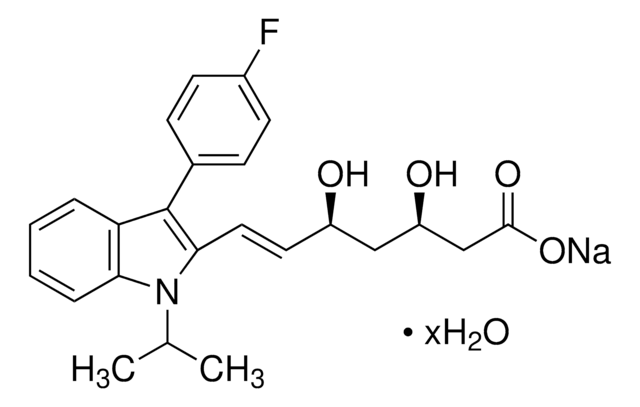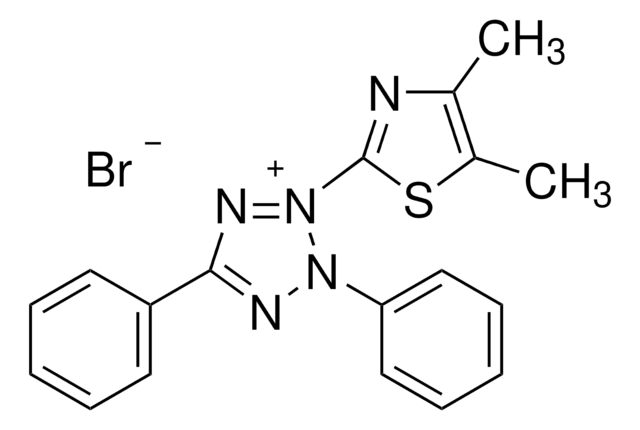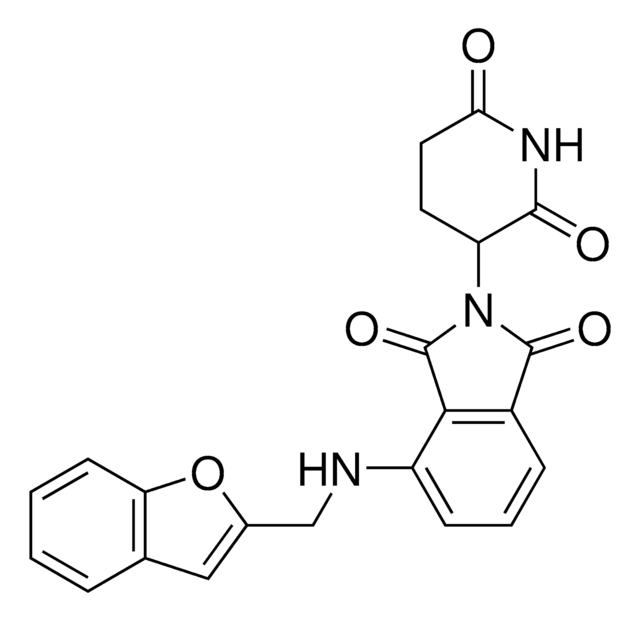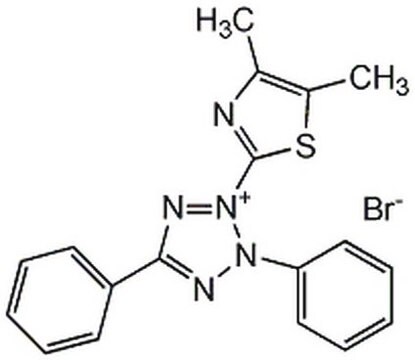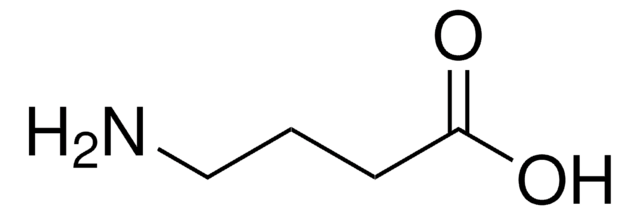L9919
LY2033298
≥98% (HPLC)
Synonyme(s) :
3-Amino-5-chloro-N-cyclopropyl-6-methoxy-4-methyl-thieno[2,3-b]pyridine-2-carboxamide
About This Item
Produits recommandés
Pureté
≥98% (HPLC)
Forme
solid
Conditions de stockage
desiccated
Couleur
off-white to tan
Solubilité
DMSO: >20 mg/mL
Auteur
Eli Lilly
Température de stockage
−20°C
Chaîne SMILES
COc1nc2sc(C(=O)NC3CC3)c(N)c2c(C)c1Cl
InChI
1S/C13H14ClN3O2S/c1-5-7-9(15)10(11(18)16-6-3-4-6)20-13(7)17-12(19-2)8(5)14/h6H,3-4,15H2,1-2H3,(H,16,18)
Clé InChI
CTEGQKDJTBWFHW-UHFFFAOYSA-N
Actions biochimiques/physiologiques
Caractéristiques et avantages
Mention d'avertissement
Danger
Mentions de danger
Conseils de prudence
Classification des risques
Resp. Sens. 1
Code de la classe de stockage
11 - Combustible Solids
Classe de danger pour l'eau (WGK)
WGK 3
Point d'éclair (°F)
Not applicable
Point d'éclair (°C)
Not applicable
Certificats d'analyse (COA)
Recherchez un Certificats d'analyse (COA) en saisissant le numéro de lot du produit. Les numéros de lot figurent sur l'étiquette du produit après les mots "Lot" ou "Batch".
Déjà en possession de ce produit ?
Retrouvez la documentation relative aux produits que vous avez récemment achetés dans la Bibliothèque de documents.
Notre équipe de scientifiques dispose d'une expérience dans tous les secteurs de la recherche, notamment en sciences de la vie, science des matériaux, synthèse chimique, chromatographie, analyse et dans de nombreux autres domaines..
Contacter notre Service technique
